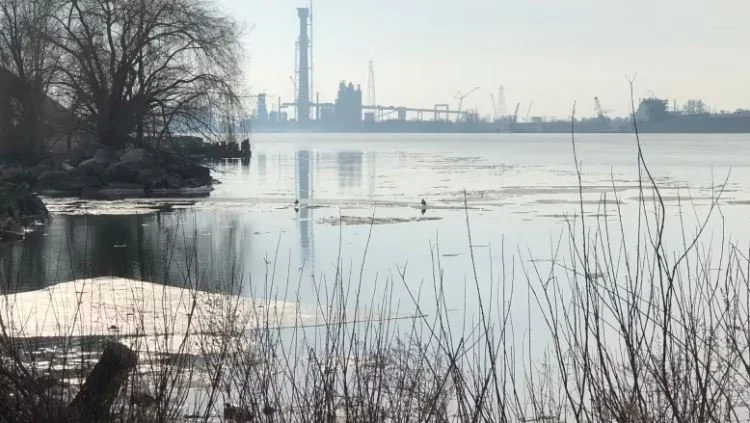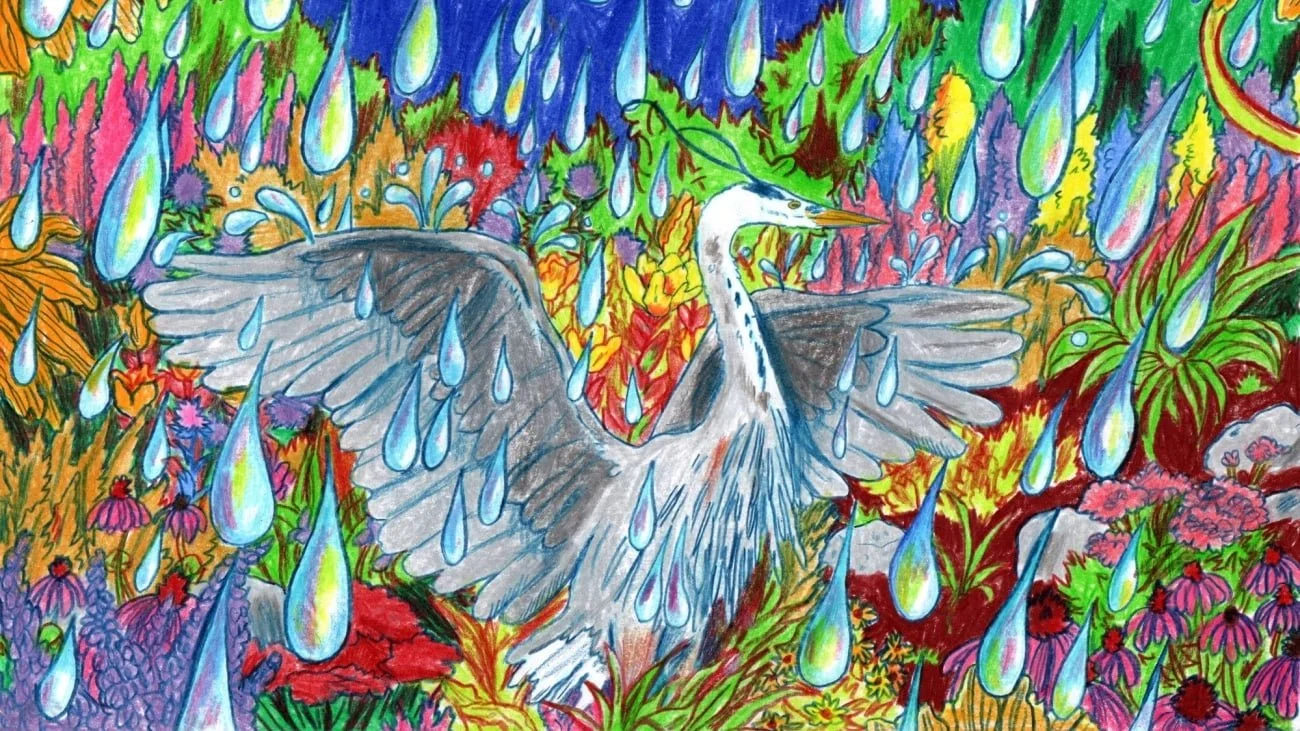The chief of the Athabasca Chipewyan First Nation is voicing his concern over yet another incident at the Kearl oilsands facility, located about a 90-minute drive north of Fort McMurray. In a statement issued Thursday, Chief Allan Adam said the Nov. 13 incident, involving water, has “once again impacted the environment on our traditional territories.”
Residents frustrated with cleanup of Etobicoke creeks 1 month after industrial fire
Residents say they're frustrated with the slow progress of the cleanup of two Etobicoke creeks nearly a month after runoff from a massive industrial fire polluted them and caused devastation to wildlife. Ontario's Ministry of Environment, Conservation and Parks says it is continuing to assess the environmental impact after a six-alarm fire on Aug. 11 at Brenntag Canada, a chemical distribution company that operates an industrial building in north Etobicoke, caused runoff to enter both Mimico Creek and Humber Creek.
After 6-alarm Etobicoke fire, crews assessing how much runoff in Lake Ontario: ministry
Cleanup crews are trying to determine how much runoff from an industrial fire in Etobicoke a week ago has made its way into Lake Ontario, the province's environment ministry says. The ministry has said the runoff is affecting two waterways, Mimico Creek and Humber Creek, and containment measures have been in place since August 11 in both creeks. On Friday, it said while measures along Mimico Creek were reinforced Wednesday, Thursday's rain night enabled the spill to move further down Mimico Creek.
Dead fish, ducks found after runoff from industrial fire seeps into 2 Toronto creeks, province says
Runoff from a massive industrial fire in Etobicoke on Friday has left dead fish and ducks in a Toronto creek, the Ontario environment ministry said on Monday. Some of the ducks in Mimico Creek that have survived the runoff have been coated in an oily sludge, according to the Toronto Wildlife Centre.
4,000 square kilometres of land has burned near Sambaa K'e. What does that mean for fish?
After a wildfire tore through the forest around Kakisa, N.W.T., in 2014, Lloyd Chicot began noticing changes in the lake: the pickerel grew fatter, and the pelicans moved in. Chicot, the chief of Ka'a'gee Tu First Nation, attributes the change partly to climate change and partly to runoff from the fire, which brought nutrients and debris into the lake. "Right after the fire, there was a lot of burnt driftwood and that kind of stuff," he recalled.
WTTW News Explains: What Happens After You Flush?
Every time you flush, the waste disappears in a swirly whirl, never to be seen again. It’s magic! Actually, it’s science and engineering. And the flush is just the start. Let’s follow that flush! First stop: The sewer pipe. This is where your business mingles with all the other household wastewater. You know, the scummy stuff that gets rinsed off your dishes and clothes and body. In older cities like Chicago, stormwater and runoff joins the party, too. That’s because Chicago has what’s called a combined sewer system.
British Columbians encouraged to prepare for possible spring flooding
With warming temperatures increasing the likelihood of rising water levels, British Columbians are encouraged to prepare for potential spring floods, while the Province, local governments and First Nations work together to keep people and communities safe. High-elevation snowpacks have not yet developed to the point that increased heat will cause significant runoff. At this time, forecasters are not anticipating a flood hazard over this current warming period for rivers lying in higher elevations, including larger rivers such as the Fraser River.
California to meet 100% of water requests thanks to storms
California will provide 100% of the water requested by cities and farms for the first time in years thanks to winter storms that filled reservoirs and runoff from a record snowpack, regulators announced Thursday. The State Water Project will provide full allocations to 29 water agencies supplying about 27 million customers and 750,000 acres of farmland, the Department of Water Resources said. As late as March, the agency was only expecting to provide 75% of requested water supplies.
Sask. spring melt a mix of headaches and joy as residents welcome the warm weather
Dare we say spring has finally come to Saskatchewan? It sure seems like it. After a weekend of warmer than usual weather, Tuesday brought even warmer temperatures across much of the province, meaning the snow and ice kept melting. The Water Security Agency (WSA) advised the public on Tuesday of the potential for ice jams on Swift Current Creek, the Moose Jaw River, the Qu'Appelle River and the Wood River after recent rapid melting and runoff.
Surface water quality, tree cover get bad grades from conservation authority
The Essex Region Conservation Authority (ERCA) released its report cards for the watersheds in the region, and while some results are positive, ERCA concluded some areas need improvement. The report cards, which are given based on five years of data collection, are given out by conservation authorities across Ontario using standardized methodologies to grade surface water and groundwater quality and forest cover, according to Katie Stammler, a water quality scientist with ERCA.
Low-to-moderate flood risk for most Manitoba waterways this spring
Spring may feel far off, but the government of Manitoba is making plans to address any potential seasonal flooding that could occur after a difficult flood season last year. The province's Hydrologic Forecast Centre released its first flood outlook for the season on Tuesday and is predicting moderate flows along the Assiniboine and Red rivers, and in the Interlake region along the Fisher and Icelandic rivers.
B.C.’s new model for predicting runoff into Okanagan Lake has a very different forecast for 2023
Each year heading into spring melt, B.C. tries its best to predict how much water will runoff into Okanagan Lake and other water bodies in the province. It’s important information as the provincial government manages the lake level using a dam in Penticton and has to strike the right balance to ensure sufficient water in the lake to last through the hot and dry summer, but not so much it causes flooding.
Watershed Conditions Statement in effect from February 14 to 19
A Watershed Conditions Statement is in effect from February 14 to February 19. The following watershed conditions statement is based on the seven-day weather forecast issued by Environment Canada on Tuesday, February 14. A period of warm weather is expected for Tuesday, Wednesday, and Thursday with freezing temperatures returning on Friday and climbing above zero on the weekend. Five to ten millimeters of rain are also forecasted for Wednesday and Thursday.
Reducing phosphorus runoff
Is it possible to reduce the amount of phosphorus being released from agricultural land and into waterways, such as Lake Winnipeg, during the spring melt? It’s a question UWinnipeg Professor Dr. Darshani Kumaragamage, Department of Environmental Studies and Sciences, and her research team are trying to answer. In most parts of the world, erosion, and rain-driven runoff are the major pathways by which phosphorus from agricultural fields enter waterbodies. However, in cold climates like the Canadian prairies, flooding-induced phosphorus loss during the snowmelt period is the dominant transport mechanism of phosphorus from agricultural lands to water bodies.
When it comes to heavier storms, rain gardens can help
At the most basic level, rain gardens function like sponges. They are typically made by digging five or so feet into the ground, adding layers of rock and soil mixes designed to absorb and filter water, and topping the layers with flowers, trees, and shrubs. A finished rain garden should dip like a bowl about half a foot below ground level so that when it rains, the garden can temporarily fill up, allowing water to percolate into the ground rather than run into the street.
Area resident challenges Town of Antigonish over runoff from solar garden project
Ed Gillis lives next door to the new community solar garden being built in Antigonish, N.S. He's been fighting with the town over many issues, including one he thinks could have major environmental ramifications. The town clear cut a large section of land for the three megawatt solar garden right up to his property line. He said that shouldn't have happened due to a number of large sinkholes in the wooded area and proximity to a small river. "This goes back to March, and it's now December, that I have brought forward concerns," he said. Those concerns are sediment and other matter going into the river.
Metro Vancouver's last remaining glacier is disappearing fast Social Sharing
Metro Vancouver's last surviving glacier, a source of local fresh water, will disappear in less than 30 years, scientists say. Scientists say climate change is accelerating the demise of the Coquitlam Glacier. The ice pack, located 40 kilometres north of Vancouver, sits on a mountain more than 1,400 metres high. During the warmer months, runoff from what's left of the glacier provides about two percent of the water in the Coquitlam Reservoir. Although not a significant source of water, for scientists surveying its decline, the glacier's disappearing act is a symptom of the stress climate change is putting on local sources of fresh water.
'Our fingers are crossed': Red Lake residents hope for quick repairs to washed-out highway
A weekend washout has cut the municipality of Red Lake off from the rest of northwestern Ontario. The washout at the Caribou Creek Bridge on Highway 105 occurred on Saturday, with high water flows completely washing away the bridge. "With the quick thaw that we've been having throughout the district, the ground remain frozen still," Red Lake Mayor Fred Mota told CBC News on Monday. "The water cannot seep into the ground, and therefore there's lots of runoff."
Messy weather coming with ice, rain and snow – and warnings about runoff
Weather forecasters warn a “messy mix of wintry precipitation,” including freezing rain and ice pellets, is set to move into Southwestern Ontario. In a special weather statement, Environment Canada says up to 25 millimetres of rain could fall between late Wednesday and Thursday afternoon. The federal weather agency is calling for a high in London of 7 C on Wednesday and 2 C Thursday.
WSA releases preliminary spring runoff forecast for Saskatchewan
A preliminary report from the Saskatchewan Water Security Agency (WSA) states the spring melt rate is expected to have a significant impact on runoff yields in southern areas of the province. How that impacts subsoil moisture levels or surface water supplies depends on the speed of the melt, the report states. Most southern regions experienced very dry conditions last summer and into the fall freeze-up, and a below snowmelt runoff potential is being forecast by the WSA.





















